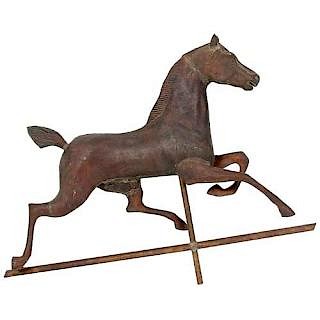Johann Stridbeck the Younger (German, 1707-1772)
Lot 368
About Seller
Cowan's Auctions
6270 Este Ave.
Cincinnati , OH 45232
United States
With offices in Cincinnati, Cleveland and Denver, Cowan’s holds over 40 auctions each year, with annual sales exceeding $16M. We reach buyers around the globe, and take pride in our reputation for integrity, customer service and great results. A full-service house, Cowan’s Auctions specializes in Am...Read more
Categories
Estimate:
$150 - $300
Absentee vs Live bid
Two ways to bid:
- Leave a max absentee bid and the platform will bid on your behalf up to your maximum bid during the live auction.
- Bid live during the auction and your bids will be submitted real-time to the auctioneer.
Bid Increments
| Price | Bid Increment |
|---|---|
| $0 | $25 |
| $500 | $50 |
| $1,000 | $100 |
| $2,000 | $250 |
| $5,000 | $500 |
| $10,000 | $1,000 |
| $20,000 | $2,500 |
| $50,000 | $5,000 |
| $100,000 | $10,000 |
About Auction
By Cowan's Auctions
Apr 16, 2016 - Apr 17, 2016
Set Reminder
2016-04-16 10:00:00
2016-04-17 10:00:00
America/New_York
Bidsquare
Bidsquare : Cleveland Fine and Decorative Art, Americana and Prints
https://www.bidsquare.com/auctions/cowans/cleveland-fine-and-decorative-art-americana-and-prints-1377
Cowan's Auctions dawnie@cowans.com
Cowan's Auctions dawnie@cowans.com
- Lot Description
Johann Stridbeck the Younger (German, 1707-1772)
Die Schweitz Der Boden See / Augusta Vindelicorum Augspurg / Kuefstein oder Kopfstein
engravings on laid paper (3)
marked Ioann Stridbeck Iunior fecit et exudit l.r., Johan Stridbeck Jun. Calgogr fecit et excudit near l.l., and Ioh. Stridbeck Iun. fec et Excudit l.r., respectively
Kuefstein with unidentified watermark
unframed
18th century
14 x 6.5 in. (largest plate); 16.25 x 9 in. (largest paper)
From The Old Master Print Collection of Johann Petz (Germany, 1818-1880), Descended in the Family of the Artist
Petz was born at Lermoos, Tyrol, in 1818 and showed an early interest in wood carving and drawing. Petz worked as a shepherd for his family as a boy, but fled as a young man to a distant relative in Wildermiemingen to pursue the study of sculpture and drawing, which he did for three and a half years. In 1837, he decided to further his studies in Munich, and by chance he came into contact with the sculptor Konrad Eberhard (German, 1768-1859). Eberhard recognized Petz’s talent and took the young man on as a pupil, and several years later, secured for him a commission for the memorial statue for the famous German scholar Heinrich Klee (1800-1840). Petz’s design outlined a Gothic niche surmounted by a pinnacles and finials, which would house a sandstone sculpture of the Good Shepherd. This marked the beginning of the young artist’s career and established his reputation in Munich.
Petz was influenced by Nazarene and Neo-Gothic movements in Bavaria, otherwise known as the Pre-Raphaelite movement in England. Petz would also go on to receive commissions for churches, altars, and tombstones in England and the United States, and was highly sought after as a sculptor and church designer. Several locations for which he designed churches and their decorations are Cham, Arnschwang, Seeon, Vilsbiburg, Isen, and Riedering. Most notably, he contributed the design for a sculpture of the Last Supper for the Frauenkirche in Munich in 1859, which was regrettably lost in air raids during World War II. During his career Petz also worked with Joseph Otto Entres (Germany, 1804-1870) and Joseph Knabl (Germany, 1819-1881).
Provenance: The Old Master Print Collection of Johann Petz (Germany, 1818-1880)Die Schweitz: Creasing at corners, light grime cover, wear to edges of paper, and marking in pencil from Petz u.r. outside plate.Condition
Augusta: Wear to edges, some discoloration, especially to edges, several diagonal creases on left side, and small tears in paper near u.r. and l.r.
Kuefstein: Several vertical creases, two of which resulted in tears to top and bottom of paper near center that were repaired with tape, discoloration, and some staining, especially to edges.
For condition inquiries please contact cleveland@cowans.com.
Please note that a condition report is only an opinion, given as a courtesy, and should not be treated as a statement of fact. Cowan's Auctions shall have no responsibility for any error or omission. - Shipping Info
-
Cowan's WILL NOT be providing in-house shipping.
Cowan's recommends the following local shippers to handle purchases:
The Neighborhood Office8440 East Washington StreetChagrin Falls, Ohio 44023Phone: 440-708-0101
Fax:440-708-0102The UPS Store1284 Som Center RoadMayfield Heights, OH 44124Phone: (440) 461-5605Fax: (440) 461-6654Email: store0226@theupsstore.com
-
- Buyer's Premium



 EUR
EUR CAD
CAD AUD
AUD GBP
GBP MXN
MXN HKD
HKD CNY
CNY MYR
MYR SEK
SEK SGD
SGD CHF
CHF THB
THB













